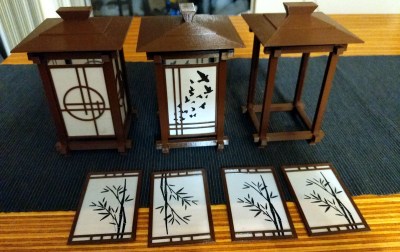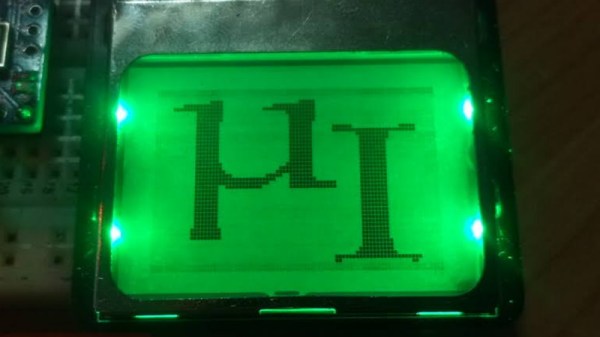When humanity comes out the other side of this pandemic there will be a mountain of awesome projects to show off in person. For instance, this backpack mounted DMX lighting was built to be worn as a mobile rave rig by Swedish hacker [Tim Gremalm]. In-person raves aren’t happening right now but that just means there’s time to add waaaaay to many features to this thing until lockdowns become a thing of the past.
The frame holding the lighting integrates into this backpack and we assume that’s where the battery is stored. The Y-shaped masts hold four PAR lights. Incidentally, that mean parabolic aluminized reflectors, which are commonly used for stage lighting, but in this case the halogen bulbs have been torn out for a trio of 4 W RGBW LEDs. The yellow rectangles are 10 W Chip-on-Board LED panels that serve as strobe lights.
But merely having the lights does not make it a Rave — this party needs both music and a way to synchronize the lighting effects with it. The music part was already built and used at the West Pride Gothenburg festival (the second largest in Sweden after Stockholm) five years ago. That project, called Festmaskinen, works in conjunction with Ljusmaskinen (the Light Machine). So two people carry the rave on their backs, one with music, the other with the lighting, now that’s a party!
The light controller board uses a set of four Arduino Nano boards along with four voltage regulators to provide control to each of the PAR lights. All of it is stitched together by control from a DMX input board which also controls the COBs. (In this image the DMX board is hidden below the light control board.) Of course you need something that can process the audio and turn it into DMX512 to bring those lighting animations to life and for that he reached for a Raspberry Pi.
[Tim] has a quick demo of the rig at work which we’ve embedded below. What we’re missing is seeing how the top-heavy structure handles when worn as a backpack. Hopefully he’ll be able to get out of his low-ceilinged home and let the stage lights fly before too long!

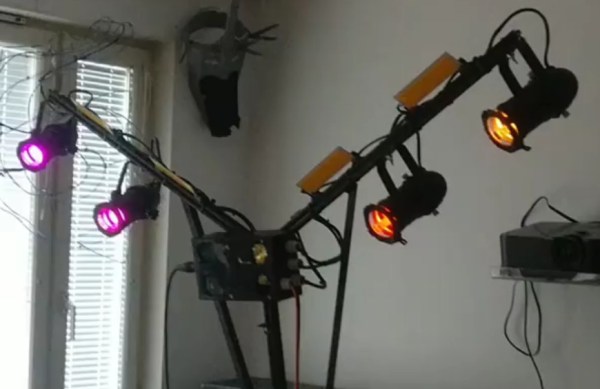


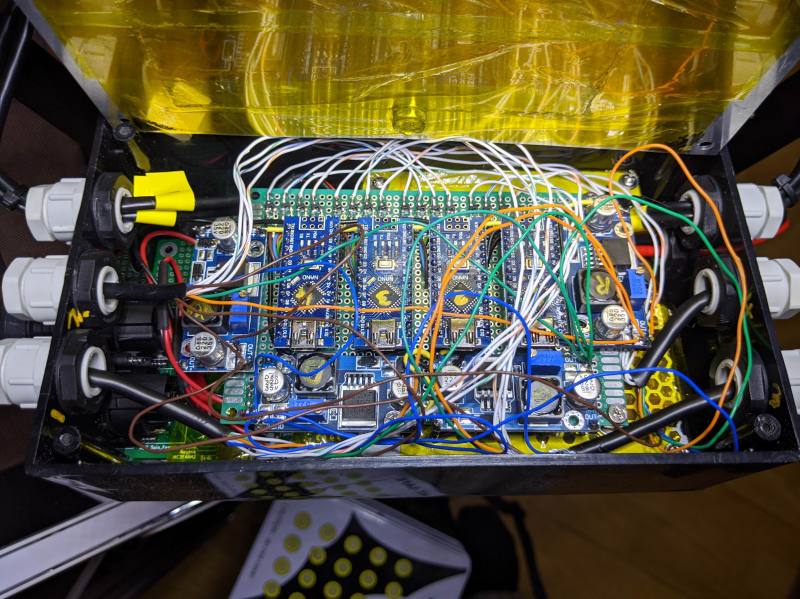
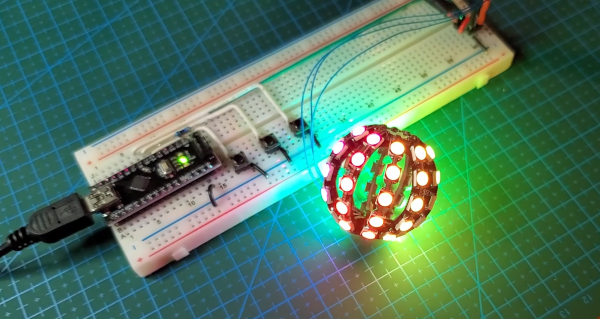
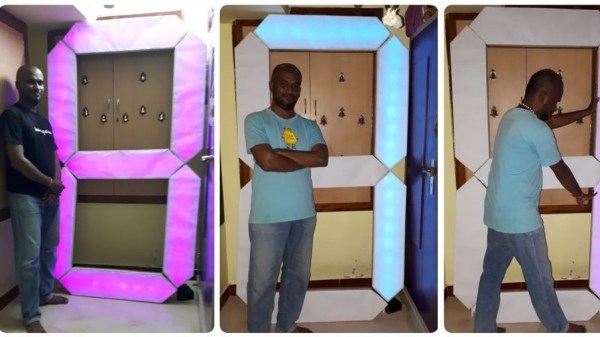
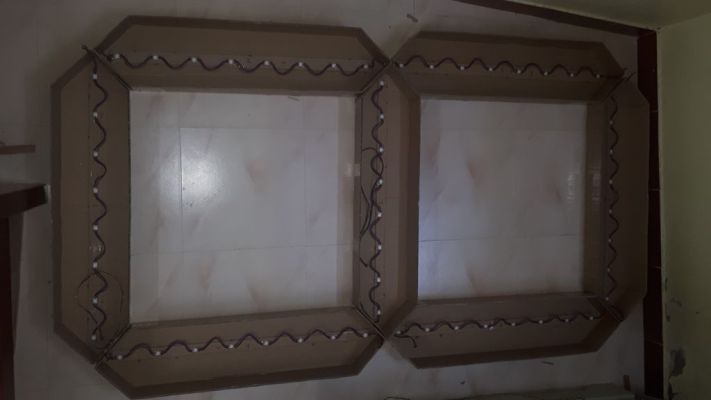 Apparently, the plan is to build a giant clock so he started off by making the first digit. To keep it cheap and simple the segments are made from corrugated cardboard which was carefully cut, folded, and then glued together. The light-diffusing lid is simply made from white paper. He used the ubiquitous WS2812B strips to light up the segments, but things turned out to be more complicated as he was not able to get enough strips to fill up all the segments. This forced him to cut up the strip into individual pieces and space them out by reconnecting the LEDs with wires. Cutting, stripping, and soldering 186 wires took him almost 10 hours. An Arduino Uno serves as the brains of the device and there is a nice Android app to control it via Bluetooth.
Apparently, the plan is to build a giant clock so he started off by making the first digit. To keep it cheap and simple the segments are made from corrugated cardboard which was carefully cut, folded, and then glued together. The light-diffusing lid is simply made from white paper. He used the ubiquitous WS2812B strips to light up the segments, but things turned out to be more complicated as he was not able to get enough strips to fill up all the segments. This forced him to cut up the strip into individual pieces and space them out by reconnecting the LEDs with wires. Cutting, stripping, and soldering 186 wires took him almost 10 hours. An Arduino Uno serves as the brains of the device and there is a nice Android app to control it via Bluetooth.


